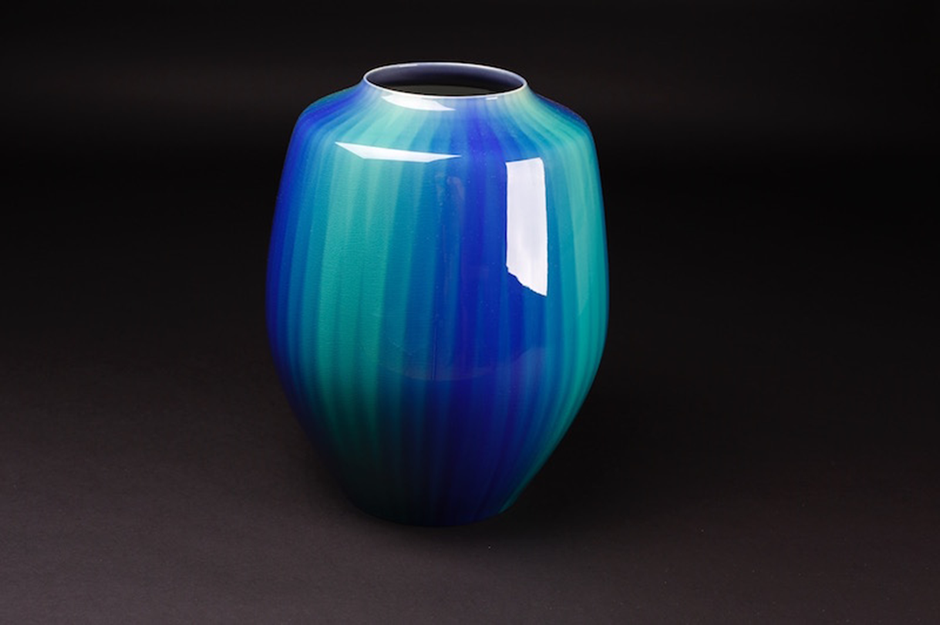
耀彩花器 W23.9cm D23.9cm H30.9cm 口径10.6cm


耀彩花器 W23.9cm D23.9cm H30.9cm 口径10.6cm
Yasokichi Tokuda
In 1933, Yasokichi TokudaⅢ(Masahiko) was born in Nomi, Komatsu, Ishikawa as the first son of Yasokichi TokudaⅡ.Since he was little, he had lived with his grandfather and his father, surrounded by great crafts of Kutani-Yaki, being told about anecdotes of works. When he was 20, he started to work at the craft and studying under two Yasokichi(ⅠandⅡ).He was told by TokudaⅠwho was the authority of old Kutani style about colors and expression method of it and he was mostly inherited modernity and creativity by TokudaⅡwho was inspired by his father: Kenkichi Tomimoto known as a father of contemporary art of ceramics.
During continuing his training, even though he had been worried about his destiny that people would compare him with two of great predecessors, TokudaⅠ passed away when Masahiko was 22. At that moment his grandfather gave a black note written in secret codes.In the note, there were some secrets about glazes and all of his research that he never told to anyone even his sons and apprentices. Masahiko broke all the codes and eventually deciphered every secret method of over 100 colors. Masahiko had decided to dedicate everything to the creation in order to pursue his grandfather’s life-spending research on his way.
Masahiko made many color glazes which were intentionally modified the amount a bit from the Tokuda Ⅰ’s original ones and searched how much the colors changed between two of them. Eventually, he found over 70 identifiable colors and the fact that when he was firing ceramics painted with those colors in higher temperature than his father’s age, a beautiful gradation emerged. Could we imagine how far he was impressed to be an only person in the world who was watching the miracle? This is how the typical skill of Tokuda Ⅲ “Yousai” was born.
Masahiko was interested in European drawings and most of his skills including “Yousai” came from an abstract painting as well so he had been criticized a lot by the fans of traditional Kutani-yaki. However, he decided to chase the new method of color expression in order to go beyond his predecessor's way as far as he was born in the crafts which strength is coloring.So he continued creating the works with “Yousai”. After a time, “Yousai ” was recognized as the new method of Kutani-ware and those works have been acclaimed in all over the world.
In 1982, Masahiko succeeded Yasokichi Tokuda Ⅲ. Then in 2009, he was recognized as a Living National Treasure for his Saiyu glaze technique. He did not agree to just follow the tradition while inheriting it and he made his original world beyond it. His imposing attitude is very similar to his beautiful works he left.